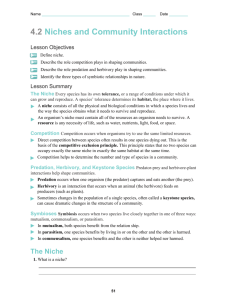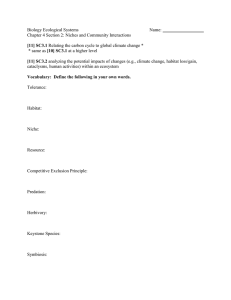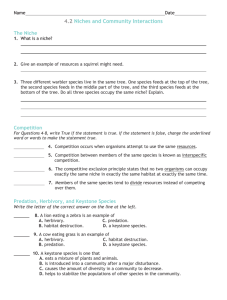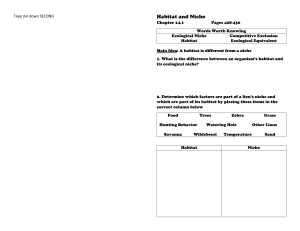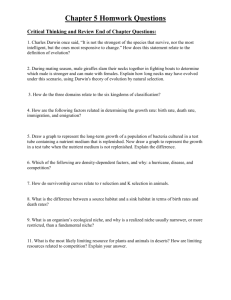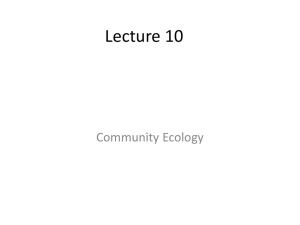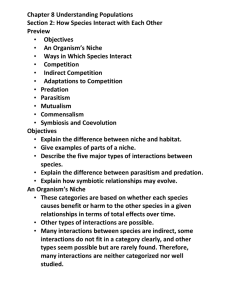Niches and Community Interactions
advertisement
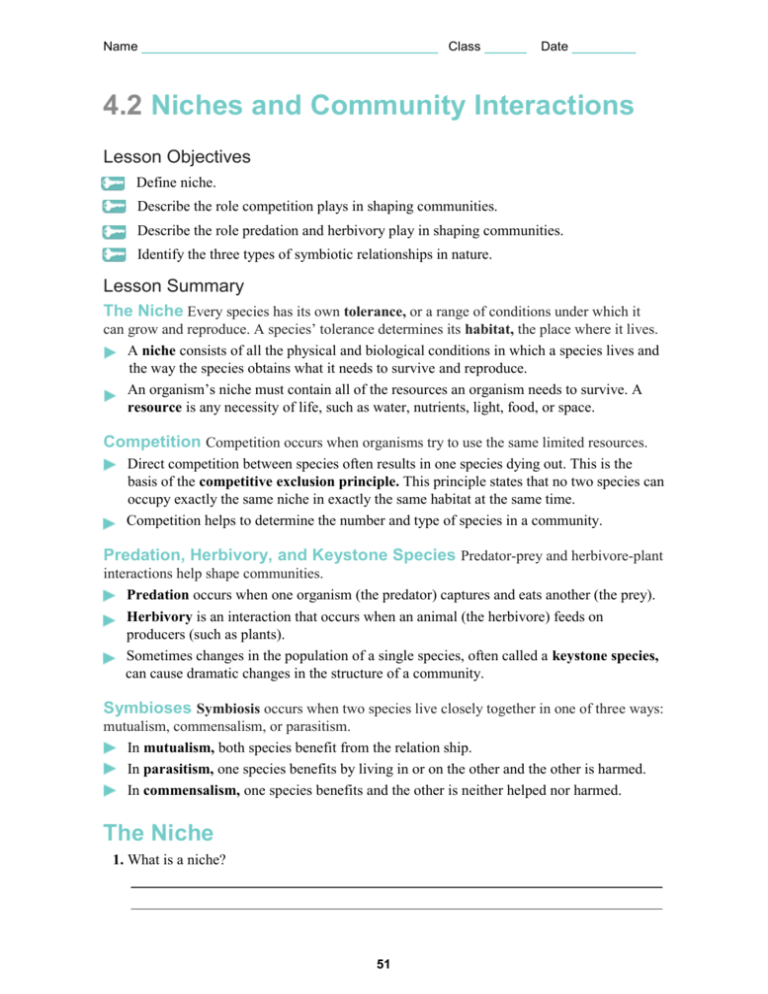
Name Class Date 4.2 Niches and Community Interactions Lesson Objectives Define niche. Describe the role competition plays in shaping communities. Describe the role predation and herbivory play in shaping communities. Identify the three types of symbiotic relationships in nature. Lesson Summary The Niche Every species has its own tolerance, or a range of conditions under which it can grow and reproduce. A species’ tolerance determines its habitat, the place where it lives. A niche consists of all the physical and biological conditions in which a species lives and the way the species obtains what it needs to survive and reproduce. An organism’s niche must contain all of the resources an organism needs to survive. A resource is any necessity of life, such as water, nutrients, light, food, or space. Competition Competition occurs when organisms try to use the same limited resources. Direct competition between species often results in one species dying out. This is the basis of the competitive exclusion principle. This principle states that no two species can occupy exactly the same niche in exactly the same habitat at the same time. Competition helps to determine the number and type of species in a community. Predation, Herbivory, and Keystone Species Predator-prey and herbivore-plant interactions help shape communities. Predation occurs when one organism (the predator) captures and eats another (the prey). Herbivory is an interaction that occurs when an animal (the herbivore) feeds on producers (such as plants). Sometimes changes in the population of a single species, often called a keystone species, can cause dramatic changes in the structure of a community. Symbioses Symbiosis occurs when two species live closely together in one of three ways: mutualism, commensalism, or parasitism. In mutualism, both species benefit from the relation ship. In parasitism, one species benefits by living in or on the other and the other is harmed. In commensalism, one species benefits and the other is neither helped nor harmed. The Niche 1. What is a niche? 51 Name Class Date 2. Give an example of resources a squirrel might need. 3. Three different warbler species live in the same tree. One species feeds at the top of the tree, the second species feeds in the middle part of the tree, and the third species feeds at the bottom of the tree. Do all three species occupy the same niche? Explain. Competition For Questions 4–8, write True if the statement is true. If the statement is false, change the underlined word or words to make the statement true. 4. Competition occurs when organisms attempt to use the same resources. 5. Competition between members of the same species is known as interspecific competition. 6. The competitive exclusion principle states that no two organisms can occupy exactly the same niche in exactly the same habitat at exactly the same time. 7. If two species of bacteria are grown in the same culture, one species will always outcompete the other. 8. Members of the same species tend to divide resources instead of competing over them. Predation, Herbivory, and Keystone Species Write the letter of the correct answer on the line at the left. 9. A lion eating a zebra is an example of A. herbivory. C. predation. B. habitat destruction. D. a keystone species. 10. A cow eating grass is an example of A. herbivory. C. habitat destruction. B. predation. D. a keystone species. 11. A keystone species is one that A. eats a mixture of plants and animals. B. is introduced into a community after a major disturbance. C. causes the amount of diversity in a community to decrease. D. helps to stabilize the populations of other species in the community. 52 Name Class Date Symbioses 12. Complete the table about main classes of symbiotic relationships. Main Classes of Symbiotic Relationships Class Description of Relationships Mutualism Commensalism Parasitism Match the example with the type of relationship. A relationship type may be used more than once. Example Type of Relationship 13. a tick living on the body of a deer 14. a bee eating a flower’s nectar and picking up the flower’s pollen A. mutualism B. commensalism C. parasitism 15. a barnacle living on a whale’s skin 16. a tapeworm living in a person’s intestines 17. an aphid providing food to an ant in exchange for protection Apply the Big idea 19. How do keystone species illustrate the interdependence of organisms living in a community? Give an example. 53

